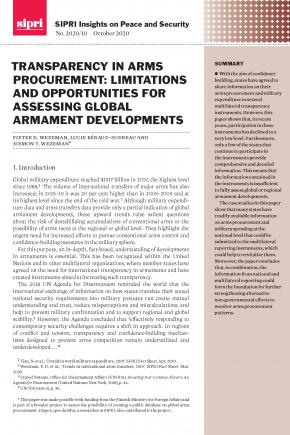Transparency in Arms Procurement: Limitations and Opportunities for Assessing Global Armament Developments
With the aim of confidence building, states have agreed to share information on their arms procurement and military expenditure in several multilateral transparency instruments. However, this paper shows that, in recent years, participation in these instruments has declined to a very low level. Furthermore, only a few of the states that continue to participate in the instruments provide comprehensive and detailed information. This means that the information contained in the instruments is insufficient to fully assess global or regional armament developments.
The case studies in this paper show that many states have readily available information on arms procurement and military spending at the national level that could be submitted to the multilateral reporting instruments, which could help to revitalize them. Moreover, the paper concludes that, in combination, the information from national and multilateral reporting could form the foundation for further strengthening alternative non-governmental efforts to monitor arms procurement patterns.
I. Introduction
II. Transparency in the number and types of arms procured
III. Transparency in military procurement spending
IV. Arms procurement transparency: Country case studies
V. Conclusions



